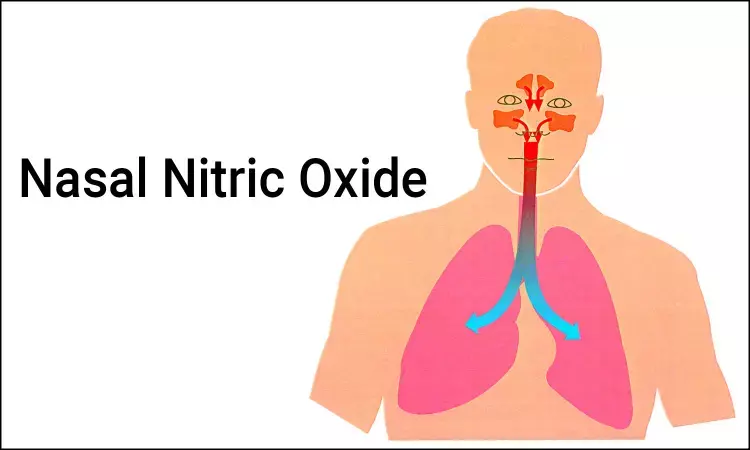- Home
- Medical news & Guidelines
- Anesthesiology
- Cardiology and CTVS
- Critical Care
- Dentistry
- Dermatology
- Diabetes and Endocrinology
- ENT
- Gastroenterology
- Medicine
- Nephrology
- Neurology
- Obstretics-Gynaecology
- Oncology
- Ophthalmology
- Orthopaedics
- Pediatrics-Neonatology
- Psychiatry
- Pulmonology
- Radiology
- Surgery
- Urology
- Laboratory Medicine
- Diet
- Nursing
- Paramedical
- Physiotherapy
- Health news
- Fact Check
- Bone Health Fact Check
- Brain Health Fact Check
- Cancer Related Fact Check
- Child Care Fact Check
- Dental and oral health fact check
- Diabetes and metabolic health fact check
- Diet and Nutrition Fact Check
- Eye and ENT Care Fact Check
- Fitness fact check
- Gut health fact check
- Heart health fact check
- Kidney health fact check
- Medical education fact check
- Men's health fact check
- Respiratory fact check
- Skin and hair care fact check
- Vaccine and Immunization fact check
- Women's health fact check
- AYUSH
- State News
- Andaman and Nicobar Islands
- Andhra Pradesh
- Arunachal Pradesh
- Assam
- Bihar
- Chandigarh
- Chattisgarh
- Dadra and Nagar Haveli
- Daman and Diu
- Delhi
- Goa
- Gujarat
- Haryana
- Himachal Pradesh
- Jammu & Kashmir
- Jharkhand
- Karnataka
- Kerala
- Ladakh
- Lakshadweep
- Madhya Pradesh
- Maharashtra
- Manipur
- Meghalaya
- Mizoram
- Nagaland
- Odisha
- Puducherry
- Punjab
- Rajasthan
- Sikkim
- Tamil Nadu
- Telangana
- Tripura
- Uttar Pradesh
- Uttrakhand
- West Bengal
- Medical Education
- Industry
FeNO score with clinical signs and symptoms improves asthma diagnosis

The diagnostic value of Fractional exhaled nitric oxide (FeNO) in conjunction with clinical signs and symptoms (CSS) was improved by the diagnostic scoring model, says an article published in Respiratory Medicine.
It is well established that fractional exhaled nitric oxide is useful for diagnosing asthma. When clinical indications and symptoms are combined, the diagnostic value may be improved. In order to create a new model for confirming and excluding asthma, Benjamin Brunn and colleagues undertook this study.
This was a diagnostic multi-center investigation conducted in three German pneumologists' offices. As a diagnostic reference standard, whole-body plethysmography was used in conjunction with bronchodilation tests or bronchial provocation. A follow-up was conducted three months later. For the final diagnosis, a panel of medical professionals looked at test findings, symptoms, and illness progression. To facilitate the combinatorial generation of decision rules, pertinent CSS that were known from guidelines were employed. A diagnostic score was created from the results of multiple logistic regression modeling, and it was then internally verified using ten-fold cross validation.
The key findings of this study were:
1. Included in this work were 308 patients, who had received full follow-up.
2. The average age of the 186 people (females 60.4%) was 44.7 years, and 52.5% of them had asthma.
3. The diagnostic score's average area under the receiver operating curve (AUC) was 0.755 (interquartile range: 0.721–0.814).
4. Leading symptoms for diagnosing asthma are allergic rhinitis, wheezing, dyspnea with exercise, coughing fits during night, and waking due to shortness of breath.
5. Symptoms to rule out included recurrent coughing and respiratory infections.
6. FeNO and CSS allowed asthma to be ruled in with a probability of up to 99% and out with a post-test probability as low as 9%.
Reference:
Brunn, B., Hapfelmeier, A., Jörres, R. A., Schultz, K., & Schneider, A. (2023). Development of a diagnostic score using FeNO and symptoms to predict asthma. In Respiratory Medicine (p. 107299). Elsevier BV. https://doi.org/10.1016/j.rmed.2023.107299
Neuroscience Masters graduate
Jacinthlyn Sylvia, a Neuroscience Master's graduate from Chennai has worked extensively in deciphering the neurobiology of cognition and motor control in aging. She also has spread-out exposure to Neurosurgery from her Bachelor’s. She is currently involved in active Neuro-Oncology research. She is an upcoming neuroscientist with a fiery passion for writing. Her news cover at Medical Dialogues feature recent discoveries and updates from the healthcare and biomedical research fields. She can be reached at editorial@medicaldialogues.in
Dr Kamal Kant Kohli-MBBS, DTCD- a chest specialist with more than 30 years of practice and a flair for writing clinical articles, Dr Kamal Kant Kohli joined Medical Dialogues as a Chief Editor of Medical News. Besides writing articles, as an editor, he proofreads and verifies all the medical content published on Medical Dialogues including those coming from journals, studies,medical conferences,guidelines etc. Email: drkohli@medicaldialogues.in. Contact no. 011-43720751


